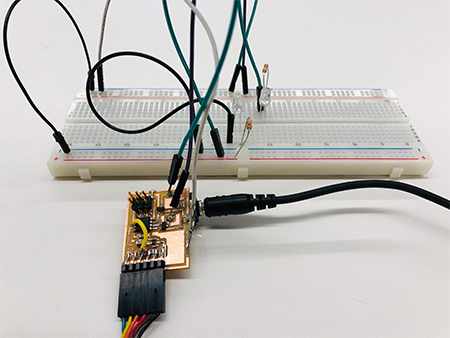This week I was on the camera shutter team in the Harvard section with Lara and Victoria. I really enjoyed working on this project and with them despite the exhausting troubleshooting
Week 11
Mechanical Machine Design
We all brainstormed together about how to make the shutter work and decided on using 2 mosfets because we needed a way to control a short in order to take a photo.
I worked primarily on the code and testing of the final board with Lara. Below are photos of the original code I wrote and where we started out.*should be noted that Lara wrote the OG code and then I edited and then we worked together from there
On Monday Lara and I worked about 13 hours straight on the program. It was deceptively hard to write given that it is so short but we had serious limitations given the Arduino libraries and syntax, and also because the SoftwareSerial library took up 60% of our memory so we had to be really efficient with space and how we declared variables. Other than space, the main challenge we faced was getting the Serial Monitor to wait for our inputs after we started the program. We were ready to call it a day at 10:30 PM and then Jeffrey and Abdul came in and helped us out. After we figured out the inputs and memory space we had to wait until Tuesday because we had forgotten to put LEDs in the original board so that we could test if the gates were working properly. Below is a photo of our original board (hooked up to LEDs on a breadboard, which we added the next day)

The next day when we were testing with the camera the focus would work but we couldn't get the shutter to go off except if the camera was in continuous mode where it would fire with no intervals. We changed the code, we redesigned the board, we changed the code again. At some point I went to dinner with my advisor and when I came back David and Lara were literally calling it a night when I started thinking maybe it was the mosfets and not the code that was the problem- While mosfets generally spread voltage well, because as heat increases so does the resistance, mosfets in parallel can be parasitic. The focus only needs a few eV to work, meanwhile the shutter needs ~6V to trigger. My theory was/is that since we were writing the focus high first, it was stealing most of the voltage and so that there wasn't enough of a voltage drop across the mosfet for the shutter to work. Even if that is not the case, changing the program to write the shutter high first worked!
Here is a photo of the final code and a video of everything in action, which includes the new board